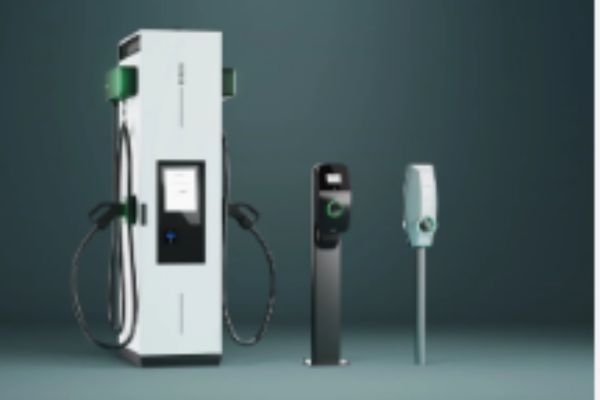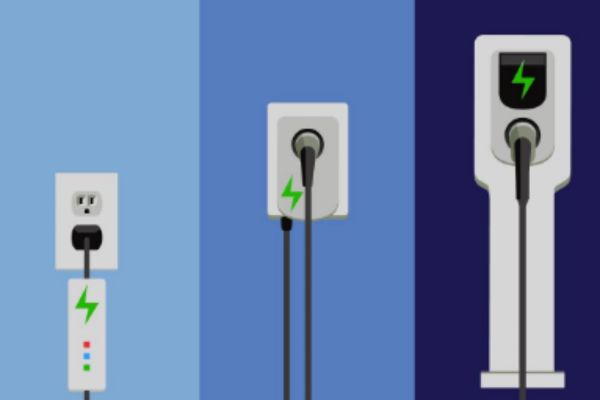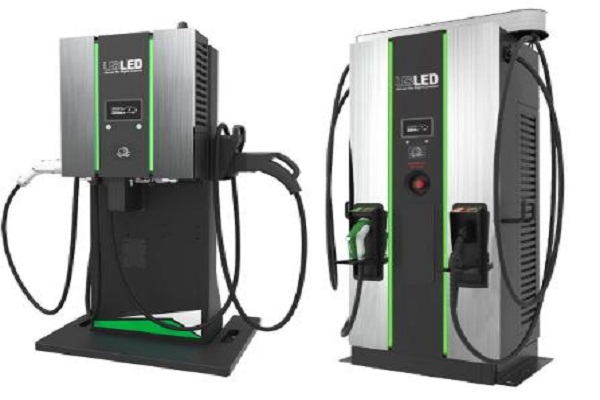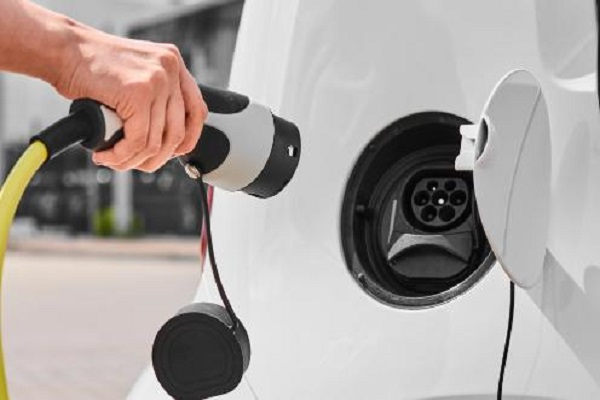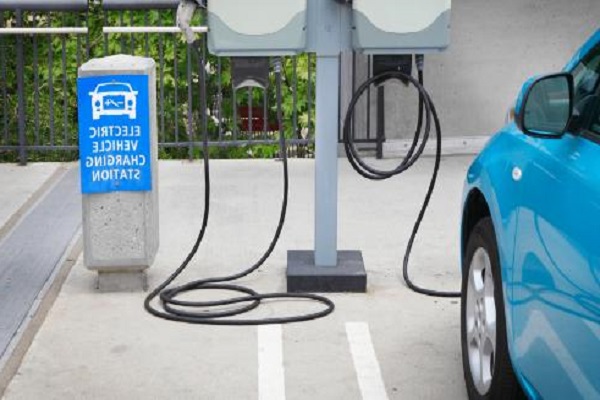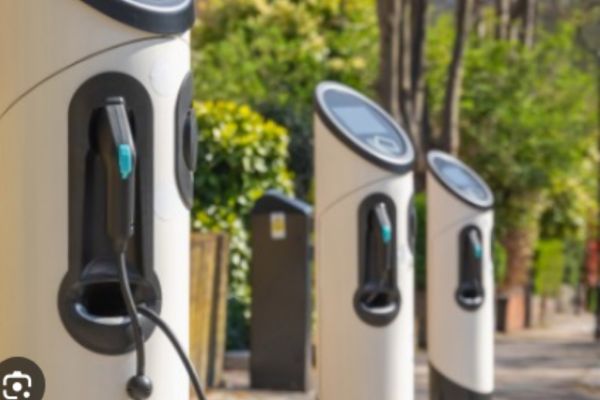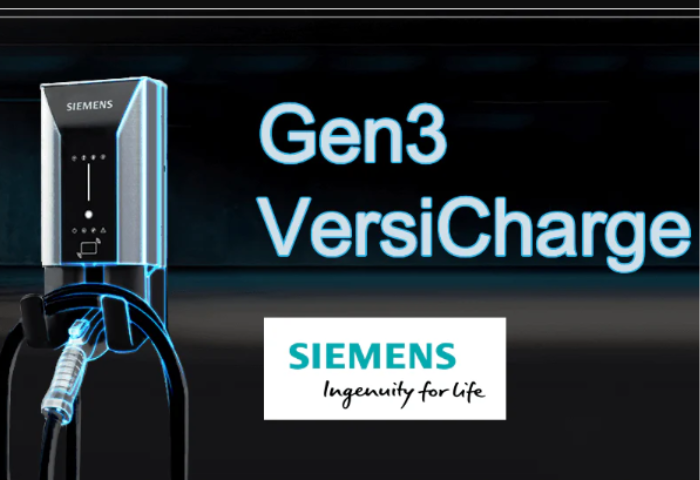Unlocking the Future of Electric Vehicles: The Comprehensive Guide to Level 3 Commercial EV Chargers
In the ever-evolving world of electric vehicles, fast and reliable charging is key. Level 3 commercial EV chargers, also known as DC fast chargers, offer a powerful solution for businesses. These high-powered stations can deliver a significant charge in a fraction of the time compared to standard chargers, making them ideal for locations with high customer turnover or where drivers need to get back on the road quickly.
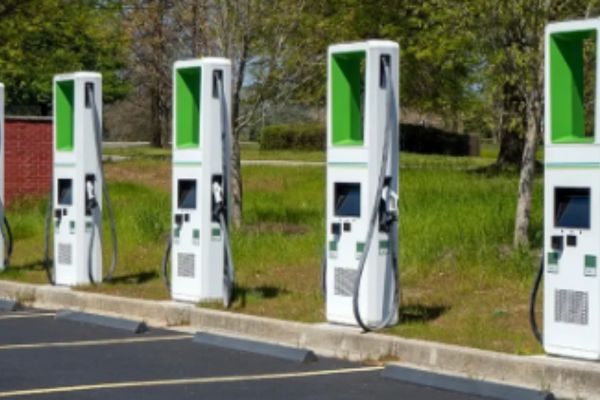
Why are Level 3 EV Chargers Revolutionizing Commercial Spaces?
Level 3 EV chargers, also known as DC fast chargers, are rapidly transforming commercial spaces. This revolution is driven by three key factors: the speed advantage they offer, their ability to attract EV drivers, and their contribution to sustainability.
The Speed Advantage of Level 3 Charging Stations
Lightning-Fast Charging: Redefining Speed in EV Charging
Level 3 charging stations represent the pinnacle of speed in electric vehicle (EV) charging technology, offering unparalleled rapid charging capabilities that transform the charging experience for EV owners.
High-Powered Efficiency: Minimizing Downtime, Maximizing Convenience
With Level 3 chargers, EV drivers can enjoy significantly reduced charging times compared to lower-level chargers, enabling them to get back on the road swiftly and efficiently without long waiting periods.
Seamless Integration: Enhancing Accessibility and User Experience
The speed advantage of Level 3 charging stations ensures a seamless charging experience for EV owners, making EV adoption more attractive and practical by minimizing inconvenience and maximizing convenience.
Driving EV Adoption: Accelerating the Transition to Sustainable Transportation
By offering rapid charging solutions, Level 3 charging stations play a crucial role in accelerating the widespread adoption of electric vehicles, driving forward the transition to a cleaner, greener, and more sustainable transportation ecosystem.
Attracting EV Drivers to Your Business
Charging as a Service: Catering to EV Owners’ Needs
By offering EV charging stations at your business premises, you create a compelling reason for EV drivers to visit, providing them with a convenient and essential service that enhances their overall experience.
Promoting Accessibility: Making Charging Stations Visible and Accessible
Ensure that your EV charging stations are prominently located and easily accessible, both in terms of physical placement and visibility on maps and EV charging apps, to attract EV drivers passing by your business.
Customer Incentives: Rewarding EV Drivers for Their Patronage
Implement loyalty programs or discounts specifically targeted at EV drivers who utilize your charging stations, incentivizing them to choose your business over competitors and fostering a sense of loyalty and appreciation.
Eco-Friendly Branding: Positioning Your Business as an Advocate for Sustainability
Showcase your commitment to sustainability by promoting your EV charging facilities as part of your eco-friendly initiatives, appealing to environmentally conscious consumers, and aligning your brand with their values.
Collaborative Partnerships: Leveraging Collaborations with EV Manufacturers and Associations
Forge partnerships with EV manufacturers or local EV associations to promote your business as a preferred destination for EV drivers, leveraging their networks and credibility to attract a broader audience of EV enthusiasts.
Community Engagement: Hosting EV-related Events and Workshops
Organize events, workshops, or informational sessions focused on EVs and sustainable transportation, positioning your business as a hub for EV enthusiasts and fostering community engagement and goodwill.
By implementing these strategies, you can effectively attract EV drivers to your business, leveraging the growing popularity of electric vehicles to drive foot traffic and enhance your brand reputation as a forward-thinking and customer-centric establishment.
Reducing Carbon Footprint and Embracing Sustainability
Beyond the practical benefits, Level 3 EV chargers offer businesses a powerful way to demonstrate their commitment to sustainability and environmental responsibility. Here’s how:
Reduced Reliance on Fossil Fuels: Electric vehicles are inherently cleaner than gasoline-powered cars, producing zero tailpipe emissions. By encouraging the use of EVs through fast charging options, businesses contribute to a significant reduction in overall greenhouse gas emissions.
Aligning with Green Initiatives: As environmental consciousness grows, consumers increasingly support businesses that prioritize sustainability. Installing Level 3 chargers showcases your commitment to a greener future and aligns your brand with environmentally responsible practices.
Positive Public Image: Promoting your investment in Level 3 charging generates positive publicity. It demonstrates your dedication to combating climate change and positions you as a leader in sustainability within your community. This positive image can attract eco-conscious customers and strengthen your brand’s reputation.
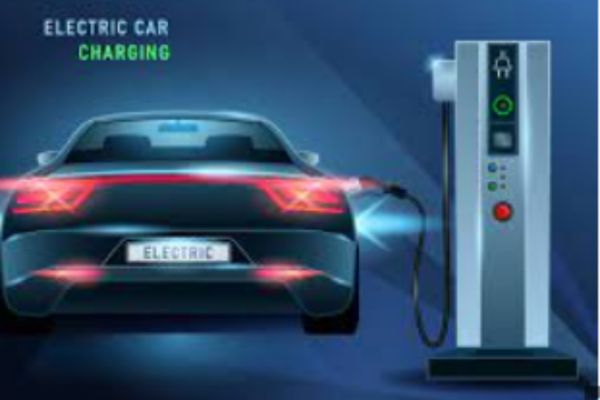
What to Consider Before Installing a Level 3 EV Charger?
Level 3 EV chargers, also known as DC fast chargers, are the speed demons of the EV charging world, capable of topping off an electric vehicle’s battery in a fraction of the time it takes a Level 2 charger. However, before you jump into installing one at your home or business, there are a few important considerations to keep in mind.
Assessing electrical infrastructure compatibility
Level 3 chargers require a significantly higher amount of power than their Level 1 and Level 2 counterparts. A typical Level 2 charger might use 7.2 kW to 22.4 kW, while a Level 3 charger can provide anywhere from 50 kW to 350 kW. To ensure your electrical system can handle this kind of power demand, you’ll need to assess the following:
- Electrical service type: Most homes in the United States have single-phase service, which may not be sufficient for a Level 3 charger. Three-phase service is typically required to support the high power requirements.
- Amperage capacity: Your electrical panel and circuit breakers must be able to provide enough amps to handle the charger’s load. This could require a panel upgrade or a dedicated circuit installation.
- Voltage drop: The distance between your electrical panel and the charger location can cause a voltage drop. You’ll need to ensure that the voltage reaching the charger is high enough to operate properly.
Understanding installation costs and incentives
The cost of installing a Level 3 charger can vary depending on the factors mentioned above. In general, you can expect to pay several thousand dollars for the charger itself, plus the cost of electrical upgrades and installation labor.
However, there are a number of government and utility incentives available to help offset the cost of EV charger installation. The U.S. Department of Energy offers a tax credit of up to 30% of the cost of a Level 3 charger, and many states and local governments offer additional rebates or incentives. Be sure to check with your local authorities to see what programs you may be eligible for.
Choosing the Right Location for Maximum Utility
When choosing a location for your Level 3 charger, consider the following factors:
Accessibility: The charger should be easily accessible to vehicles, with enough space for them to maneuver around.
Visibility: The charger should be in a well-lit and visible location to deter vandalism.
Convenience: The charger should be located in a convenient spot for users, such as near a parking lot or entrance.
Future needs: Consider how many chargers you may need in the future and plan the location accordingly.
By carefully considering these factors, you can ensure that your Level 3 EV charger installation is a success.
Exploring the Financial Benefits of Level 3 EV Charging for Businesses
While the upfront costs of installing Level 3 EV chargers can be significant, there are several compelling financial benefits that can make them a worthwhile investment for businesses. Let’s delve into some key advantages:
Boosting Revenue through Charging Fees
New Revenue Stream: Level 3 chargers offer businesses the opportunity to create a new revenue stream by charging electric vehicle owners for the use of the station. With the growing adoption of EVs, this presents a chance to tap into a lucrative market.
Competitive Advantage: Businesses with Level 3 chargers can position themselves as leaders in sustainability and attract customers who are specifically looking for EV-friendly options. This can be a significant differentiator in a competitive marketplace.
Flexible Pricing Models: Businesses have the flexibility to implement various pricing models for their charging stations, such as per-minute fees, flat fees per charge, or even subscription models for frequent users.
Enhancing Property Value and Attractiveness
Increased Property Value: Studies suggest that properties with EV charging infrastructure can experience an increase in value. This is due to the growing demand for EV-friendly locations and the overall positive perception associated with sustainability initiatives.
Attract Customers and Tenants: By offering Level 3 charging, businesses can attract customers who are more likely to spend time and money at their location while their EVs charge. This is particularly beneficial for businesses like restaurants, retail stores, and entertainment venues.
Attract and Retain Talent: Offering EV charging amenities can also be a factor in attracting and retaining environmentally conscious employees. This can be a valuable perk in a competitive job market.
Government Grants and Tax Benefits for Green Initiatives
Financial Incentives: Many governments offer grants, rebates, or tax credits to businesses that invest in EV charging infrastructure. These incentives can significantly reduce the upfront costs of installation, making Level 3 chargers a more financially viable option.
Positive Public Image: Taking advantage of government incentives for green initiatives demonstrates a commitment to sustainability, which can enhance a business’s public image and brand reputation. This can lead to increased customer loyalty and positive word-of-mouth marketing.
By considering these financial benefits, businesses can make an informed decision about whether investing in Level 3 EV charging stations is the right move for them. While the initial investment might be high, the potential for increased revenue, property value, and positive brand perception can make it a worthwhile long-term strategy.
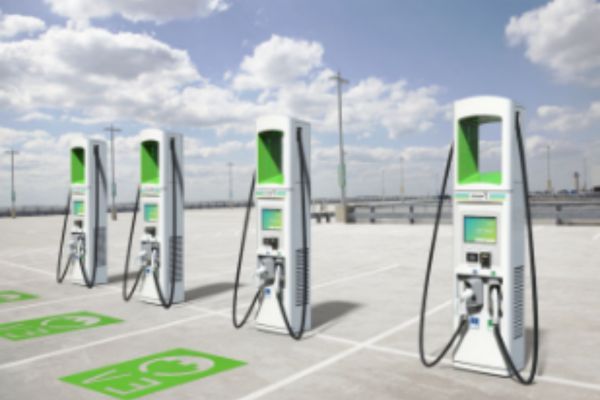
The Top Level 3 EV Charging Brands and What Sets Them Apart
Comparing Charger Speed, Durability, and Connectivity Features
| Brand | Charger Speed (kW) | Durability | Connectivity Features |
| ABB Terra | Up to 300+ | Renowned for robustness | Limited; May require integration with 3rd party apps |
| ChargePoint Express | Varies (generally lower than ABB) | established brand likely prioritizes quality | User-friendly mobile app for location, availability, and payment |
| Tesla Supercharger | Up to 250+ (Tesla vehicles only) | Limited data, but Tesla known for quality | Proprietary network; Requires Tesla app for location & payment |
| Electrify America | High-powered, specifics may vary | New network, durability data emerging | Mobile app for location, availability (payment may vary) |
| Enel X Way | Varies by region | Information may vary by model | Connectivity features may vary by region; Research specific models |
Additional Considerations:
- Non-Tesla brands (except Tesla) typically use standard connectors (CCS or CHAdeMO) for wider EV compatibility.
- ABB’s industrial background might offer a future-proof solution.
Choosing the right charger
- Speed: ABB or Tesla for top speeds.
- Experience: ChargePoint for user-friendly apps.
- Sustainability: Enel X Way (if renewable energy is a priority).
- Research: Specific models within each brand to find the best fit for your needs (speed, durability, connectivity).
Warranty and Maintenance Services Overview
While the upfront cost of Level 3 EV chargers might seem daunting, warranty coverage and maintenance services are crucial factors to consider for long-term investment protection. Here’s a breakdown of what to expect:
Warranty
- Typical Coverage: Warranty periods for Level 3 chargers typically range from 2 to 3 years, with some manufacturers offering extended warranties for an additional cost.
- Covered Components: The warranty typically covers defects in materials and workmanship for the charger itself, potentially including internal components like cables and connectors.
- Fine Print: Carefully read the warranty terms and conditions to understand what’s covered and what’s not. This may include exclusions for damage resulting from vandalism, power surges, or improper installation.
Maintenance Services
- Importance of Regular Maintenance: Level 3 chargers, especially those in high-use locations, require regular maintenance to ensure optimal performance and prevent costly breakdowns.
- Maintenance Plans: Many manufacturers and charger retailers offer maintenance plans that cover periodic inspections, cleaning, and potential component replacements. These plans can provide peace of mind and help extend the lifespan of your charger.
- Self-Maintenance: Some basic maintenance tasks, like keeping the charging area clear of debris, can be performed by the owner or operator.
Additional Considerations
- Availability of Service Providers: Ensure qualified technicians are available in your area to service the specific charger model you choose.
- Cost of Maintenance Plans: Compare the cost of maintenance plans offered by different manufacturers or service providers.
- DIY vs. Professional Maintenance: While some basic tasks are manageable, complex repairs should always be handled by certified professionals.
Warranty and Maintenance Tips
- Register your charger : Register your charger with the manufacturer to ensure you receive warranty updates and potential recall notifications.
- Schedule regular maintenance : Follow the manufacturer’s recommended maintenance schedule, or consider enrolling in a comprehensive maintenance plan.
- Keep service records. Maintain a record of all maintenance performed on your charger for future reference.
By understanding warranty coverage and available maintenance services, you can make informed decisions when purchasing a Level 3 EV charger. This will help you ensure the long-term reliability and performance of your investment.
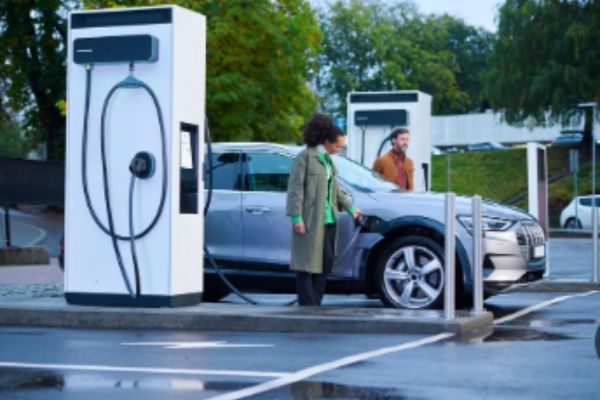
User Experience: Mobile Apps and Payment Systems
A seamless user experience is crucial for Level 3 EV chargers. Here’s how mobile apps and payment systems can make a big difference:
Mobile Apps
- Station Location and Availability: real-time information about nearby charging stations, including their location, availability (in-use or open), and any potential wait times.
- Charger Details: Display details about each station, such as the type of charger (CCS, CHAdeMO, etc.), maximum power output (kW), and any additional amenities like restrooms or nearby stores.
- Trip Planning: Integrate with navigation apps to help plan trips that factor in charging stops and estimated charging times.
- Account Management: Manage user accounts, including payment information, charging history, and potentially loyalty programs with rewards for frequent use.
Payment Systems
- Convenient Payment Options: Multiple payment options like credit cards, debit cards, or mobile wallets (Apple Pay, Google Pay) provide a quick and hassle-free charging experience.
- In-App Payment Integration: seamless integration between the mobile app and the payment system, allowing users to initiate and pay for charging sessions directly from their phones.
- Security: Secure payment processing to ensure user financial information is protected.
Benefits of User-Friendly Apps and Payment Systems
- Reduced Wait Times: Real-time availability information helps users avoid stations that are already full.
- Improved Efficiency: Quick and easy payment options eliminate the need for cash or swiping cards at the charger itself.
- Enhanced User Satisfaction: A smooth and convenient charging experience leads to increased user satisfaction and loyalty.
Current Landscape
- Leading Brands: ChargePoint Express stands out for its user-friendly app experience. Tesla offers a proprietary app for their Supercharger network. Other brands, like Electrify America and Enel X Way, are also developing their app functionalities.
- Standardization: While there’s no single industry standard yet, many mobile apps allow users to locate stations from various networks within a single platform.
The Future of Apps and Payment Systems
- Integration with EV Navigation: Expect even tighter integration with navigation apps to provide seamless trip planning with charging stops factored in.
- Advanced Features: Potential features like reservation systems for specific charging times or integration with loyalty programs for additional benefits.
Choosing the right charger
When selecting a Level 3 EV charger, consider the mobile app experience and payment system options offered by different brands. Look for apps that are user-friendly, informative, and offer convenient payment options.
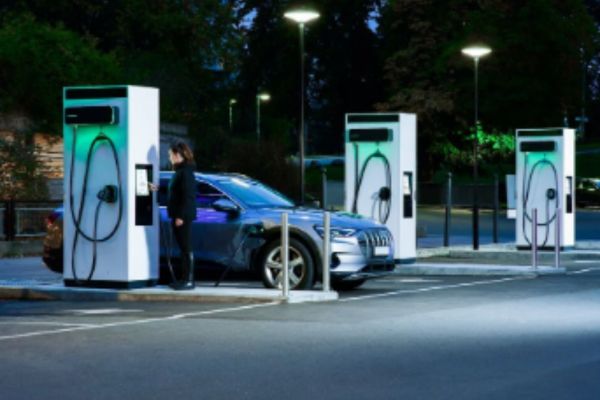
Maintaining and Troubleshooting Your Level 3 EV Charging Station
Maintaining and troubleshooting your Level 3 EV charging station is essential for ensuring its reliability, efficiency, and longevity. Here’s a guide covering regular maintenance, dealing with common technical issues, and upgrading for future EV compatibility:
Regular Maintenance Checks and Best Practices
Visual Inspection: Regularly inspect the charging station for physical damage, loose connections, or signs of wear and tear. Ensure that cables, plugs, and connectors are in good condition.
Cleaning: Keep the charging station clean and free from debris, dust, and dirt. Use a soft cloth and mild detergent to clean the exterior surfaces and connectors.
Firmware Updates: Stay updated with the latest firmware releases from the manufacturer. Regularly check for updates and apply them as recommended to ensure optimal performance and compatibility with new EV models.
Temperature Monitoring: Monitor the temperature of the charging station, especially during extreme weather conditions. High temperatures can affect charging performance and equipment longevity.
Security: Ensure the charging station is securely mounted and protected against theft or vandalism. Use security features such as locks or surveillance cameras if necessary.
User Education: Provide clear instructions on using the charging station properly and safely. Educate users about common charging etiquette, such as not leaving vehicles plugged in after charging.
Dealing with Common Technical Issues
Power Supply Problems: Check electrical connections, circuit breakers, and fuses if the charging station is not receiving power or experiencing intermittent supply issues.
Communication Errors: Troubleshoot communication errors between the charging station and the EV using diagnostic tools. Check for loose connections or network issues.
Overheating: Inspect for obstructions blocking airflow or ventilation if the charging station is overheating. Clean any dust or debris from cooling vents.
Faulty Connectors: Replace any damaged connectors or cables to prevent charging issues and ensure user safety.
Software Glitches: Reboot or reset the system if experiencing software malfunctions. Contact the manufacturer for troubleshooting assistance or firmware updates.
Upgrading Your Charger for Future EVs
Compatibility: Assess compatibility with upcoming EV models and industry standards. Consider upgrading to a newer model or retrofitting existing equipment to support faster charging speeds and advanced features.
Modular Design: Choose charging stations with a modular design for easy upgrades and expansions as technology evolves.
Power Capacity: Consider upgrading to higher power levels to accommodate future EVs with larger battery capacities and faster charging capabilities.
Smart Charging Features: Look for charging stations with smart charging capabilities to optimize efficiency and integrate with renewable energy sources and smart grid technologies.
Consultation with Experts: Seek advice from EV charging experts or manufacturers for upgrade options based on your specific needs and budget.
Following these maintenance practices and upgrade strategies will ensure reliable and efficient charging services for EV users while maximizing equipment lifespan and performance.
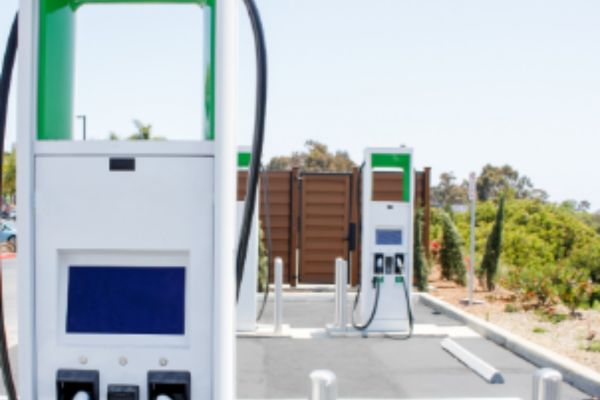
Frequently Asked Questions About Level 3 EV Charging
What Makes Level 3 Charging Different From Levels 1 and 2?
Level 3 charging, also known as DC fast charging, is the speediest way to juice up your electric vehicle. Here’s how it differs from Levels 1 and 2:
Power Delivery: Level 3 uses direct current (DC) and delivers much higher power output (50 kW to 350 kW) compared to Level 1 (regular household outlet) and Level 2 (240 v AC charging stations).
Charging Speed: Thanks to the higher power, Level 3 can significantly reduce charging times, often topping up an EV in just minutes compared to hours with Levels 1 and 2.
Internal Conversion: Level 3 chargers handle the AC to DC conversion internally, bypassing the slower conversion process within the vehicle.
How Long Does It Take to Charge an EV with a Level 3 Charger?
Charging times with Level 3 chargers depend on several factors:
Charger Power Output: higher kilowatt (kW) output translates to faster charging.
Battery Capacity of the EV: Larger batteries take longer to fill.
Current Charge Level of the Battery: A near-empty battery charges quicker initially.
Generally, Level 3 charging can add anywhere from 173 miles (278 km) to 298 miles (480 km) of range within an hour, depending on the factors mentioned above.
Can Any EV Use a Level 3 Charging Station?
Most modern EVs are compatible with Level 3 charging stations. However, it’s always a good idea to consult your vehicle’s manual to confirm its DC fast charging capability.
Additionally, there are different DC fast charging connector standards. The most common ones are:
- CCS (Combine Charging System)
- CHAdeMO
- Tesla Superchargers (use a proprietary connector)
Make sure the connector on the charging station matches the port on your EV.

Henry Michael is a leading expert in EV charging station research, specializing in innovative solutions for electric vehicle infrastructure. With a passion for sustainability and technological advancement, he is dedicated to advancing the accessibility and efficiency of EV charging worldwide.

